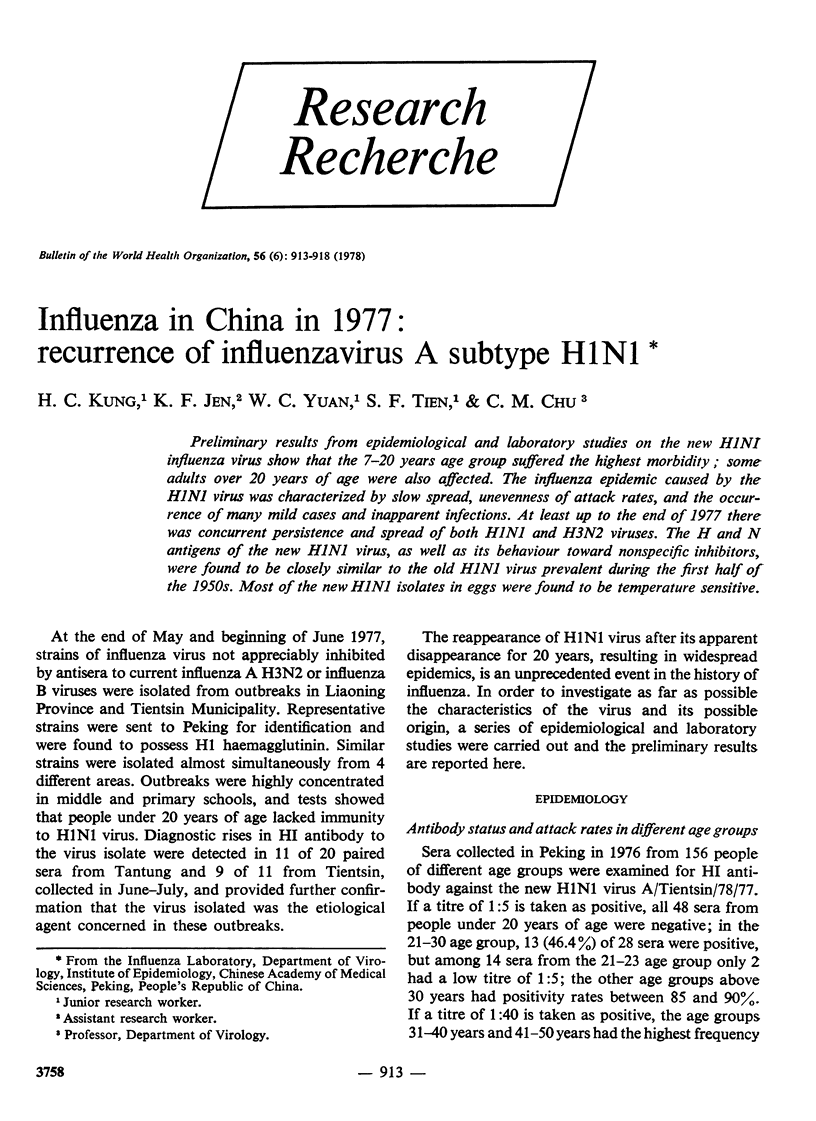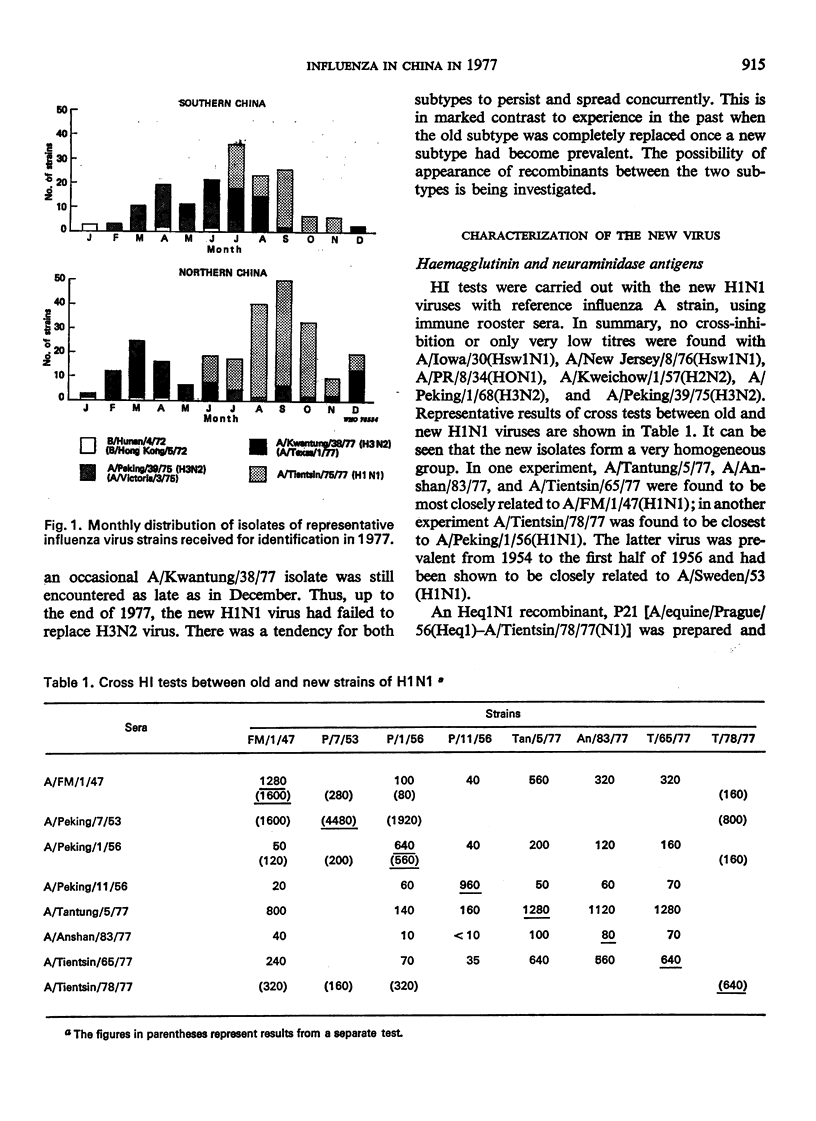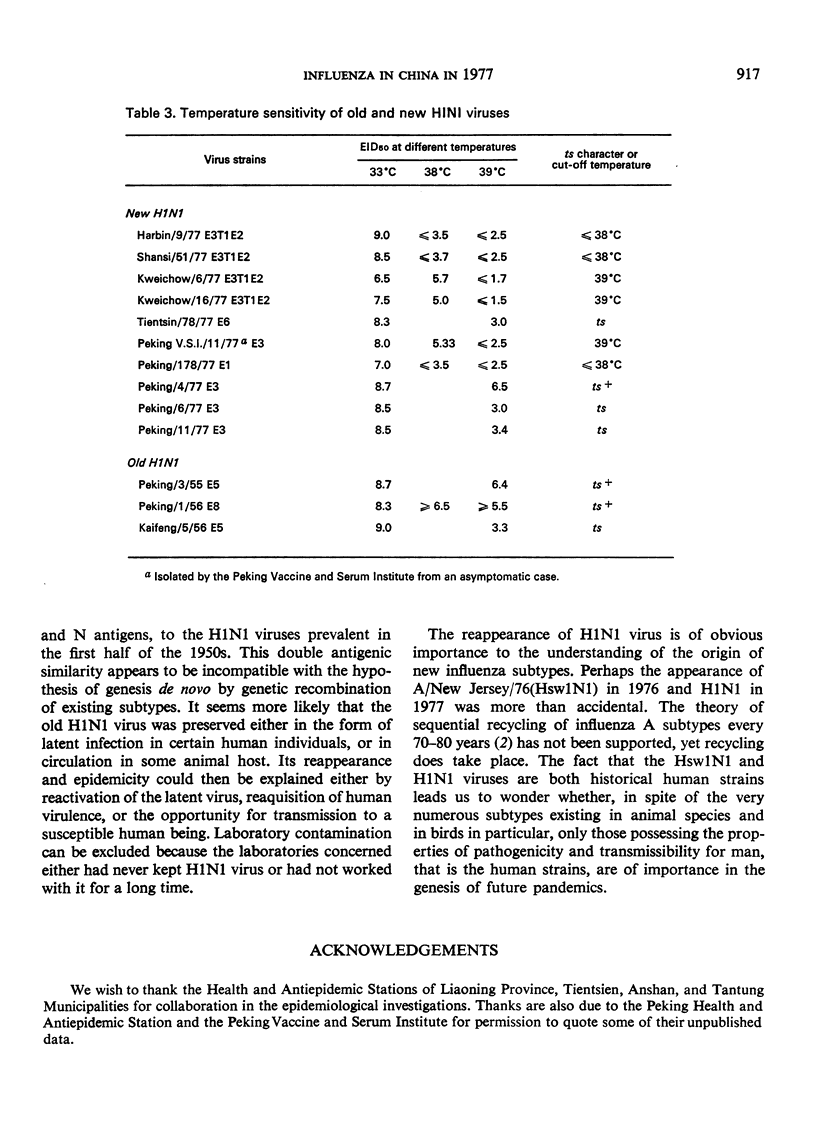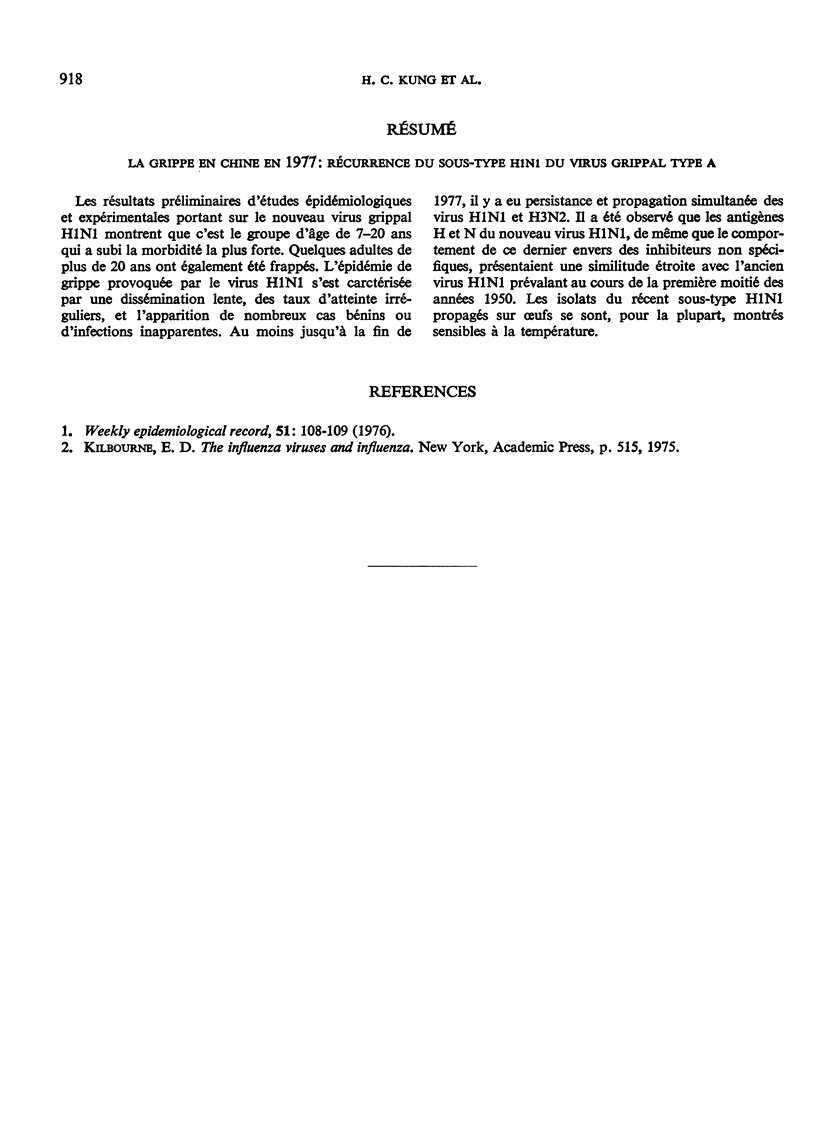Abstract
Preliminary results from epidemiological and laboratory studies on the new H1N1 influenza virus show that the 7-20 years age group suffered the highest morbidity; some adults over 20 years of age were also affected. The influenza epidemic caused by the H1N1 virus was characterized by slow spread, unevenness of attack rates, and the occurrence of many mild cases and inapparent infections. At least up to the end of 1977 there was concurrent persistence and spread of both H1N1 and H3N2 viruses. The H and N antigens of the new H1N1 virus, as well as its behaviour toward nonspecific inhibitors, were found to be closely similar to the old H1N1 virus prevalent during the first half of the 1950s. Most of the new H1N1 isolates in eggs were found to be temperature sensitive.
Full text
PDF







